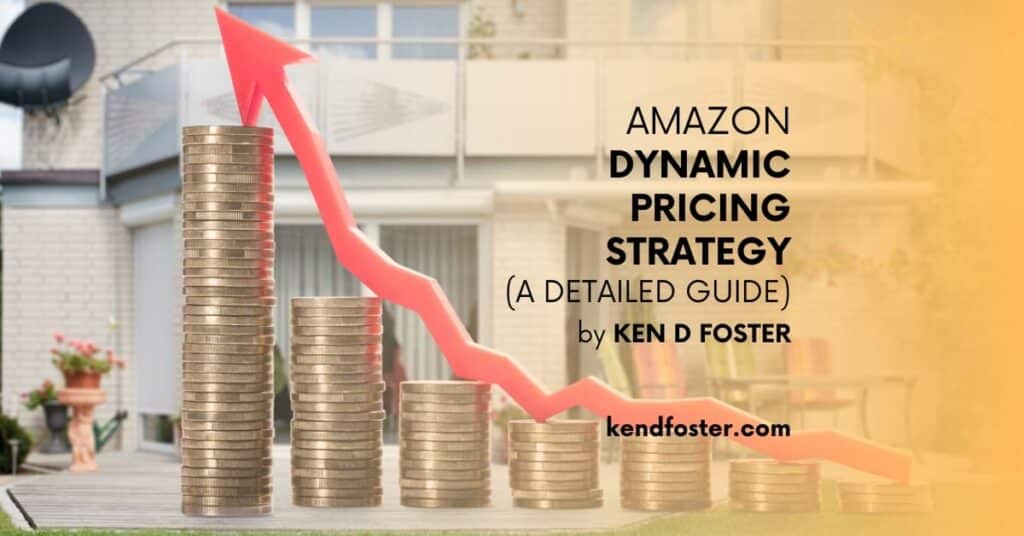
Amazon’s dynamic pricing strategy involves adjusting the prices of products in real-time based on various factors such as demand, competition, supply levels, customer behaviour, and market conditions.
In this article, let’s discuss Amazon’s dynamic pricing strategy in detail.
Components of Amazon’s Dynamic Pricing Strategy
Here are some key components of Amazon’s dynamic pricing strategy:
1. Real-time Data Analysis
Amazon uses sophisticated algorithms to monitor variables, such as:
- Customer browsing
- Purchase history
- Competitor pricing
- Market trends
- Inventory levels
- Product Seasonality
2. Competitor Price Tracking
Amazon monitors the prices of its competitors and adjusts its own accordingly. If a competitor changes their price, Amazon will respond to it by adjusting its price to remain competitive, which is why Amazon is successful.
3. Demand Fluctuations
Amazon adjusts its pricing based on demand fluctuations. For example, it reduces its pricing during peak shopping seasons like the January Sale to get more sales.
4. Inventory
If Amazon has excess stock of a particular item, it may lower the price of that product to bring more sales and clear out inventory.
5. Personalised Pricing
Amazon uses the customer data it has to tailor prices to individual customers. The algorithm considers factors like a customer’s purchase history, browsing behaviour, and location to show the best pricing for conversion.
6. Time-Sensitive Deals
Amazon often offers limited-time deals and discounts on products to create a sense of urgency, encouraging customers to make a purchase quickly.
7. Geographical Factors
The product pricing can vary depending on the geographical location of the customers. Shipping costs, local demand, and competition in a specific region can influence Amazon’s pricing.
8. Seasonal Variations
Amazon adjusts the pricing according to seasonal trends. For example, it increases the price of winter jackets during colder months and lowers it during warmer months.
9. Price Elasticity
Amazon algorithms consider price elasticity, which is the responsiveness of product demand to price changes. If a product has low price elasticity (demand remains relatively stable despite price changes), Amazon might experiment with higher prices.
Pros and Cons of Amazon’s Dynamic Pricing Strategy
Here are the pros and cons of using Amazon’s dynamic pricing strategy for your business.
Pros:
- Maximise profit: Dynamic pricing lets you optimise your product pricing for maximum profitability. When demand is high, you can increase the price; when demand is low, decrease the cost to attract price-sensitive customers.
- Better inventory management: You can use dynamic pricing to clear excess inventory by lowering prices for slow-moving products.
- Personalization: You can use dynamic pricing to customise the price of products to each customer based on their past behaviour and preferences. This strategy helps increase conversions drastically.
- Promotion: Dynamic pricing lets you sell products at a discounted price during sales season to boost sales.
- Increased market share: Dynamic pricing lets you tailor the pricing based on the customer’s location. By offering products at various prices, you can attract more customers.
Cons:
- Customer distrust: Frequently changing the pricing of products can make you lose customer trust, which can negatively impact your brand reputation.
- Lack of transparency: Algorithms control dynamic pricing. So, customers and even the owner won’t have a clear idea of how the algorithm determines pricing.
- Algorithmic errors: Algorithms make errors in some cases. It may raise the price of the product, resulting in lost sales. If it lowers the pricing, it may reduce your profit.
- Negative public perception: Increasing the product price during peak demand periods can lead to negative public perception, especially if customers believe prices are inflated unfairly.
Conclusion: Should You Implement Dynamic Pricing?
Dynamic pricing strategy has its own set of advantages and disadvantages. Amazon has trained its algorithm to implement dynamic pricing correctly. The algorithm works well most of the time.
If you want to implement a dynamic pricing strategy, you’ll need a lot of data to train the algorithm, which takes time. Till you gather enough data, it’s better to stick to conventional strategies like competitive pricing.
Having said that, not all sellers on Amazon use dynamic pricing. A lot of them still rely on a competitive pricing strategy. So, try multiple strategies and stick to one that works the best for your business.
If you need a helping hand to grow your business, book a coaching session with Ken D Foster. With over 35 years of experience, Ken can help accelerate your business growth and increase its profit. Ken has contributed to the success of hundreds of entrepreneurs, so you can rely on him to grow your business.



